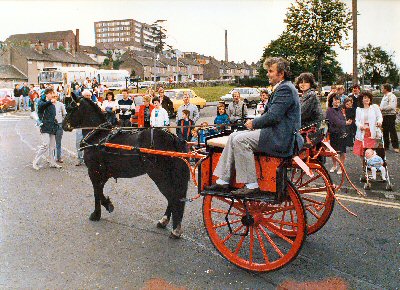A century ago marriages were much more lively affairs especially in country districts. It practically entailed a holiday for the younger people of the immediate district.
Huge crowds would gather at the church and after the ceremony the bridegroom was held captive until eventually ransomed by a contribution of money for drinks. If there was a school nearby the poor man had to provide sweets for all the scholars as well. The favourite sweets for the occasion were ‘conversation lozenges’ which happened to bear in print mottos thought to be suitable to the occasion. So school work, and inevitably farm work was irreparably interrupted for the day.
On their return home, the wedding party was greeted with bonefires at the bride’s house and refreshments were distributed. There was of course, much horseplay and occasionally accidental fires, due to the wind carrying sparks from the bonefires to the haggards or thatch.
But these above – the weddings of the descendents of the English or Scottish settlers – were indeed dull happenings in comparison with ‘native’ or ‘Irish’ celebrations of matrimony which will be described next!
